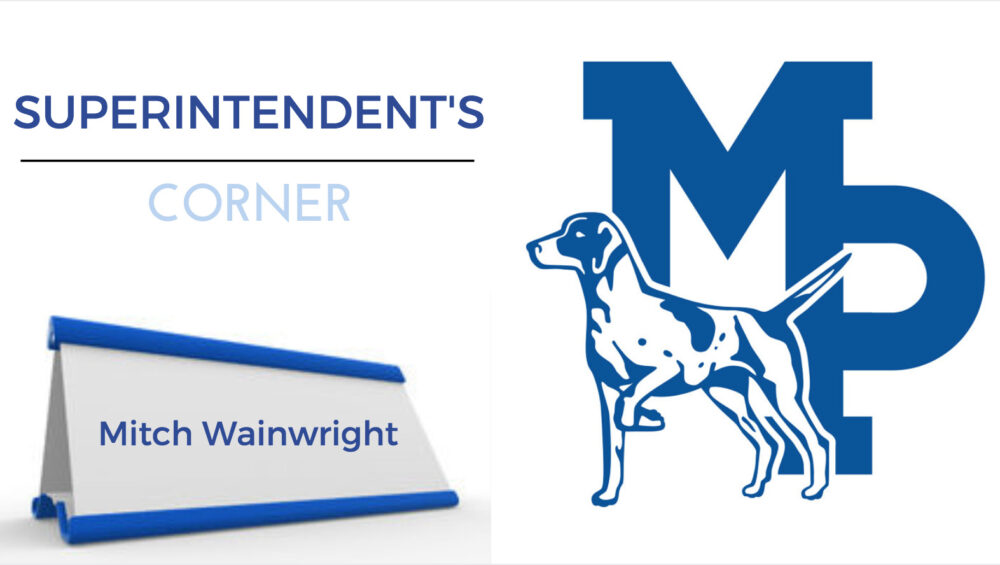
by Superintendent Mitch Wainwright
If you’ve been following along with our recent school board news, you likely have heard some potentially confusing information about deficit, referendum, and surplus. School finance is not always a topic that’s easy to understand, even for those of us who live it daily, but we strive to be transparent and keep you informed as best we can.
The school board certified the school tax levy at the end of October. Prior to that meeting, we had been discussing the possibility of needing an operating referendum, potentially as early as the April 2024 election, based on the information we had at the time. In the previous state biennial budget, 2021-23, our school district received a total of $59,668 to cover increased operating costs, including inflation. This was out of a $15 million budget. The push from lawmakers was to use Elementary and Secondary School Emergency Relief (ESSER) money to pay for ongoing expenses. Anyone who has a household budget would understand that using one-time money for ongoing expenses is not making good financial decisions. The district offered salary increases that were below the Consumer Price Index (CPI) amount. We also used that ESSER money to cover additional salaries. At the end of the day, the tax levy was reduced slightly, which was a win for everyone.
The district was preparing to set the budget for the current school year, 2023-24, and it was looking like there would be a deficit once the budget was adopted. I used the best information available at the time, and worked with our school business office, to present a budget that could be financed. The plan was to use a portion of our Fund Balance (rainy day fund) to cover the deficit. This is the main reason we have been discussing the need for an operational referendum. There was no clear information coming out of the state legislature in Madison that could have been used to prepare the budget. Multiple numbers were being discussed from no new money to $1,500 per pupil in additional funds. I used a conservative estimate on the per pupil increase and on the property valuation. With all of those conservative estimates, I felt we had a budget that could work. The good news for the district was that both numbers came in higher than anticipated. We received additional money, $325 per pupil. The state average for property values increased by about 12.5%. The Mineral Point Unified School District property increased by about 17%. This increase allowed the school district to set the levy at a higher amount. These two factors erased the projected deficit. Unfortunately, the financial problems will not go away for our district, or any other Wisconsin public school district at this time, as there hasn’t been a significant change to the state funding formula.
As a district, we have made difficult decisions to try and maintain the quality of educational programs in our buildings and be respectful to our taxpayers. The CPI pay increase could have been as high as 8.0%. The district offered 4.0%. The insurance plan maintained a zero-cost increase for the district by increasing prescription costs for staff. We did not replace a staff position as another cost-saving measure. In today’s competitive education market, it is very important we maintain the staff we have. They are responsible for providing the best educational experiences you could find in any school. Nearly every Wisconsin school district is looking at the same issues as Mineral Point. How do we maintain the excellent staff we have so our students have the best chance of being successful when they leave us? There are many schools in our area that have already, or will be, going to a referendum vote very soon. Mineral Point is no exception. Our time might be just a little farther down the road, but it is not going away unless there is a drastic change in the way the state chooses to fund schools.
We want to provide every student with the best education possible. That makes it easy to always be proud of #PointerNation.

